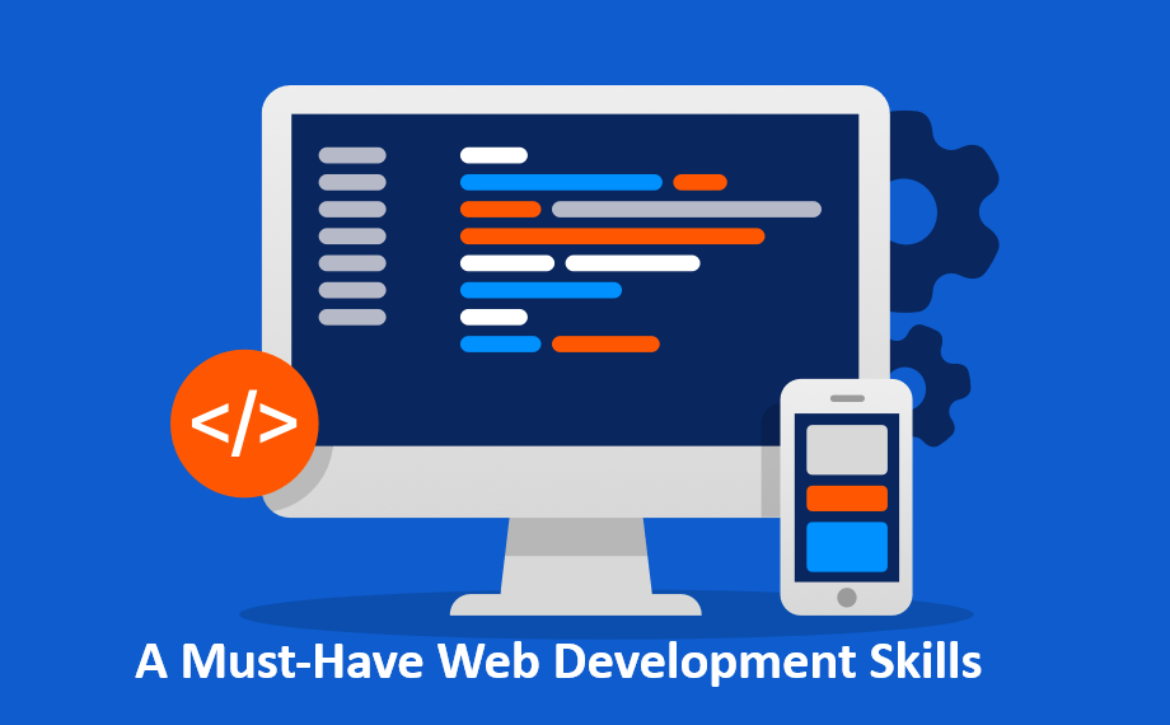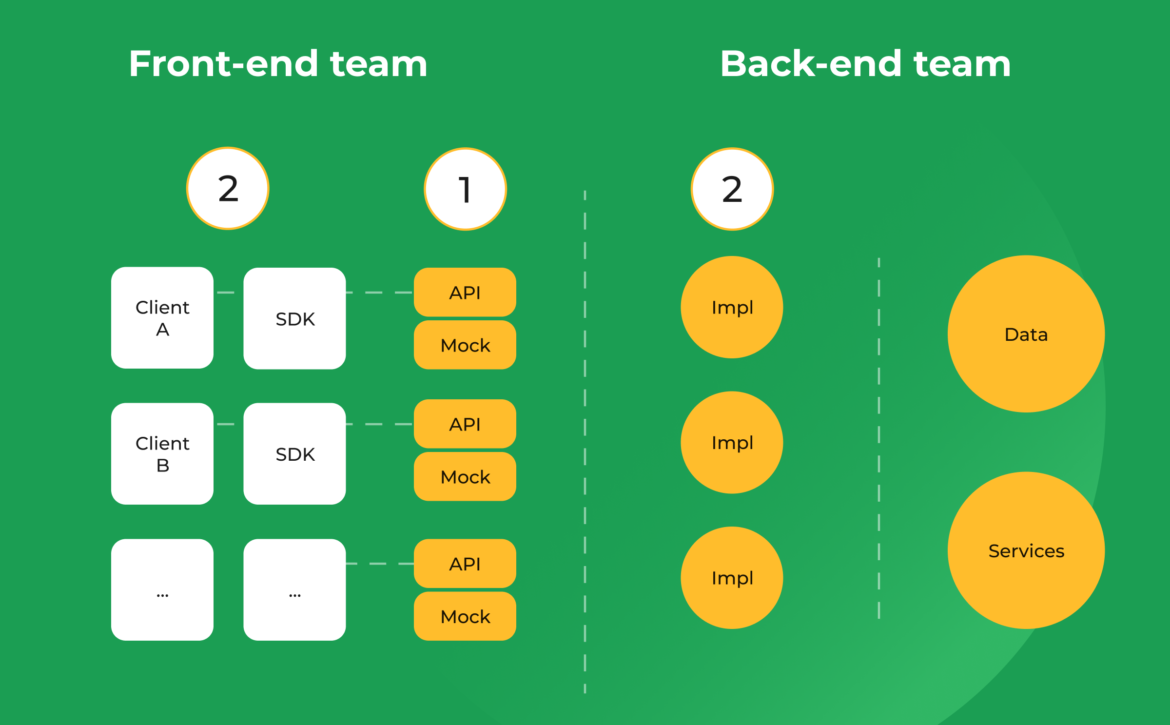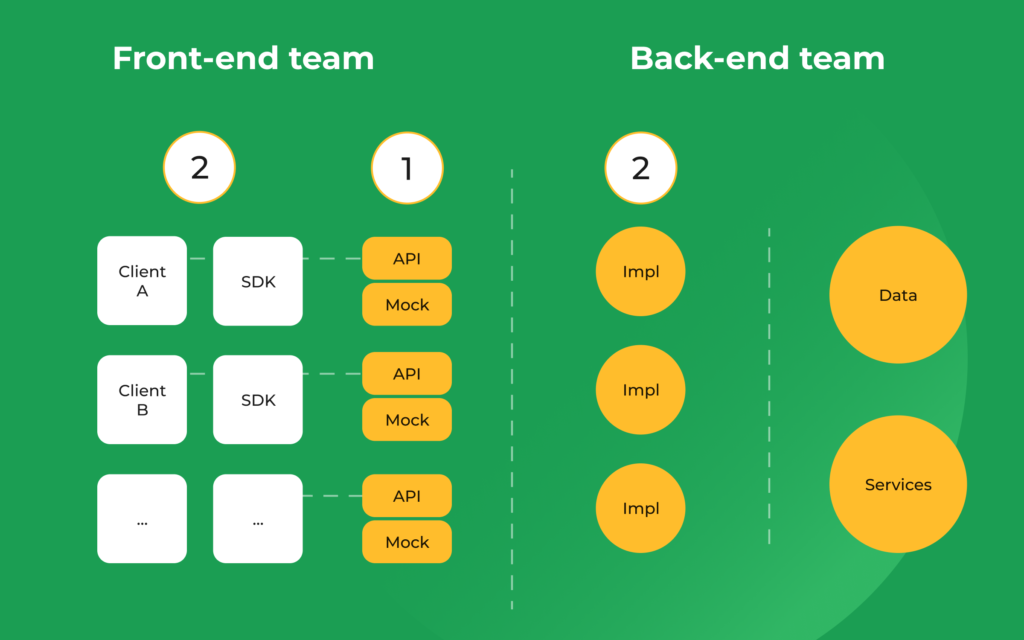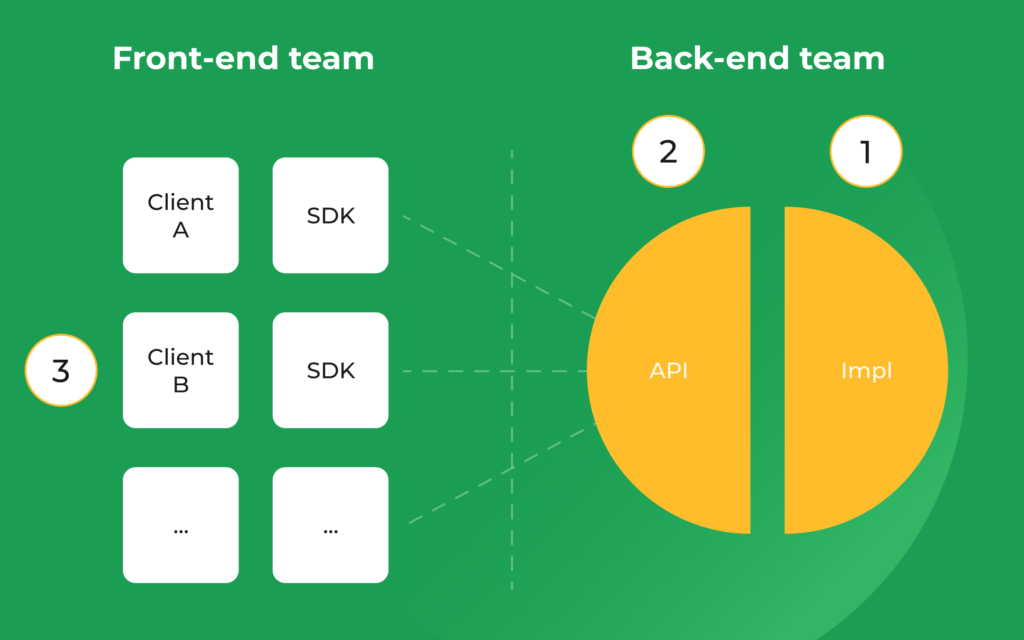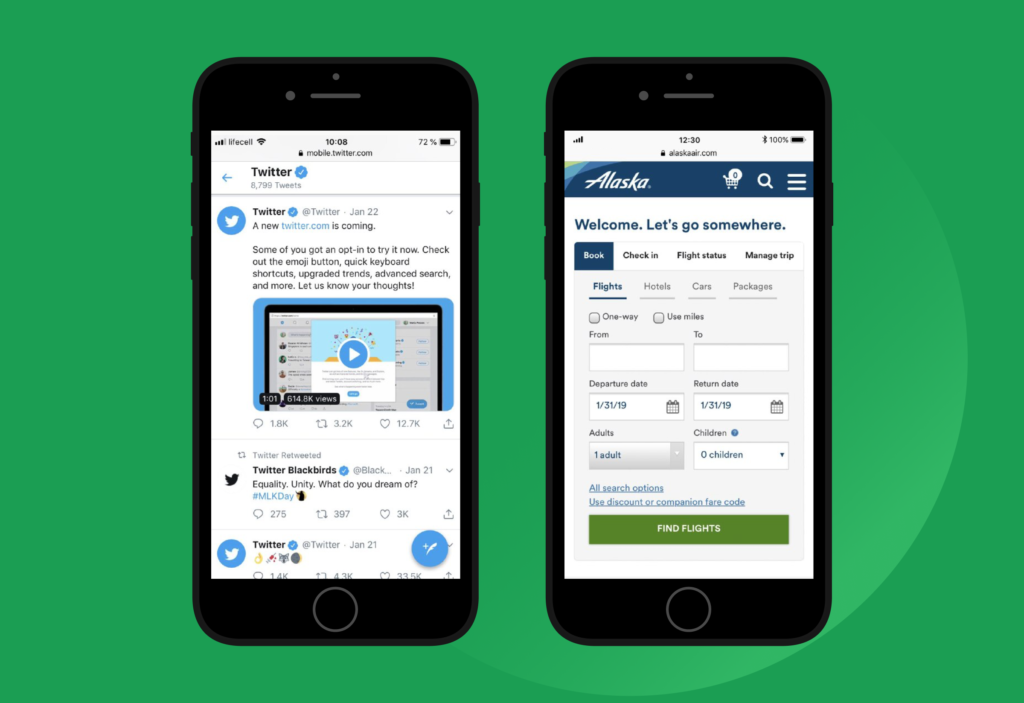The area of web development is constantly growing. It appears to be one of the most popular sectors, and it is not likely to disappear very soon, particularly in light of the worldwide epidemic that is now underway. Given this, we came up with the idea of compiling a list of key abilities that any web developer should have.
What is web development and who is a web developer, and how do you become one?
Creating and managing websites is referred to as web development; it is the process that is done behind the scenes to make a site seem nice, function swiftly, and give a smooth user experience.
Web developers do this through the use of a variety of coding languages and frameworks. The languages and frameworks that are used are defined by the tasks that they are doing and the platforms that they are running on.
Because web development skills are in great demand, it is a fantastic career choice for many people. It is one of the most widely obtainable and well-paying industries in the world today.
All aspects of web development, including front-end development, web content creation, client-side/server-side scripting, and network protection configurations, are included in the process. When used broadly, web development refers to all of the activities, changes, and operations necessary to design, manage, and administer a website in order to ensure that it functions well, provides an excellent user experience, and is as fast as possible.
Today’s times are rapidly changing, and web development is swiftly becoming one of the most tempting careers. But what exactly is a web developer, and what does one perform in this profession? The term “web developer” or “web programmer” refers to a person who translates a web design that has been created by a client or design team into a working website. They achieve this by building complicated programmes in a variety of programming languages and frameworks.
Web developers design the structure of the website, such as an aesthetically compelling main page and a user-friendly layout (the frontend of the website that is visible to the user), and that they might also create the content for the website.
As soon as a website is released, developers test and update it to ensure that it is fully functional across all web browsers, as needed. The back end of a website is made up of three components: a server, an app, and a database.
Creating and maintaining the technology that allows the elements that enable the website’s user-facing side to truly exist is the responsibility of a back-end developer. They also make use of database (a database is a collection of data that has been structured) since they allow for easier data access.
The three primary categories of web developers are front-end developers, back-end developers, and full-stack developers.
When it comes to websites, front-end developers are in control of the bits that people see and interact with, whereas back-end developers are in responsibility of the code that dictates how a website loads and runs. Full-stack developers are responsible for a variety of tasks.
Competencies as a Web Developer
You must develop solid basics in order to succeed, just as you do with any newfound information. Candidates that have experience in Web Development will stand out from the competition. Having a solid understanding of HTML, creative abilities, and analytical knowledge are all essential Front-end Web Developer abilities.
Here you will learn the fundamental skills necessary to become a Web developer, and also what you ought to know to become a more successful web developer.
HTML/CSS
It is necessary to be knowledgeable with HTML and CSS in order to work as a web developer.
The HyperText Markup Language (HTML) is the markup language used for the construction of web pages (HTML). To generate web pages, web developers frequently employ this programming language. CSS, on the other hand, is used to design the layout, colour, fonts, and overall style of a web page. Working as a front-end developer necessitates the knowledge of both of these languages.
HTML is the language that is used to build web pages from the ground up. Technology allows you to develop websites that are uniquely yours, with features and services that are both distinctive and technologically sophisticated.
HTML5 is the latest edition, and you should begin studying it as soon as possible if you are unfamiliar with it.
JavaScript
When it comes to the World Wide Web, JavaScript is mentioned alongside HTML and CSS, among other things. When it comes to required Web Developer abilities and certifications, Javascript is at the number one spot.
JavaScript is a programming language that enables you to add complex features to a website without having to learn any new programming languages. When it comes to website design, being familiar with JavaScript will enable you to meet the needs of more demanding clients. These skills will allow you to create highly dynamic websites that place a strong emphasis on the user experience.
In contrast to HTML, JavaScript is a text-based programming language that can be used to create interactive web pages on both the client and the server sides. HTML and CSS give the structure and style of web pages, but JavaScript provides dynamic features that keep users interested.
Aside from creating dynamic websites with specific characteristics (manipulate components, algorithmic thinking, and so on), developers may also employ JS to help construct an appealing network on a digital platform. If you want to work as a web developer, you can’t afford to pass on learning JavaScript.
Git
A version control system may be used by a Web Developer to keep track of, regulate, and review code changes. Git is an illustration of a code versioning tool that enables you to easily discover and correct problems in your programme code.
In order to be able to go back and evaluate your modifications to the code before making any more changes, the application helps to keep note of the modifications you have made to it. This is a must-have skill for every full-stack web developer who must operate under strict time constraints.
Backend Technical Support
Backend development languages are responsible for handling the ‘behind-the-scenes’ functionality of web applications. A web server is the programming that links the web to a data, maintains a record of user interactions, and operates the web application. Backend development collaborates with frontend development in order to offer the finished product to the customer as efficiently as possible.
Web developers that work on the backend of a website are typically focused with the function of the website. They produce code that focuses on the functionality and rationality that powers the product they’re working on, and the platform they use is never exposed to the public or to the general public.
The back end is comprised of a combination of servers, applications, and databases.
Backend programmers may be responsible for a wide range of tasks, including developing APIs, writing code to connect with databases, developing frameworks, working on business systems and data layout, and many other tasks as well. It is typically determined by the function and the organisation.
Backend programming may be divided into two categories: object-oriented programming (OOP) and functional programming. OOP languages like as Java and Python are widely used. SQL, F#, and R are just a few of the languages that are commonly used for functional programming.
JS Libraries and Frameworks
When you first start learning to programme, you’ll realise that bits of your code may be used in a diverse range of applications. In JavaScript, for example, there are a handful of functions that are often called.
As a result, why must they be rewritten from the beginning each time? Libraries come in helpful in situations like these. Completed JavaScript functions are stored in JavaScript libraries, which may be used by an application to accomplish a task while also making programming more convenient. In CSS, we may make use of libraries that already contain classes that are often used.
With frameworks, the process is much the same. In programming, the JavaScript framework refers to a JavaScript application framework that enables developers to change functions and utilise them as required. Is it really necessary to create anything from scratch when you may take something already existing and adjust it to your needs?
Frameworks not only make your job easier, but they also provide a more standardised approach to coding. These frameworks also enable programmers to design applications that are responsive to different devices. Vue.js, React.js, and Angular.js are examples of frameworks.
Testing and debugging are essential
When you are debugging your code, you are looking for bugs, flaws, or other anomalies in your code and resolving or altering them as necessary. Debugging accounts for around 33% of the total time spent by a software developer.
It is possible that you may need to examine your website for errors on a frequent basis. It is essential that you be able to fix any errors that are detected. Testing the code on a regular basis guarantees that it is operating appropriately. It follows that in order to be a good web developer, one must have the capacity to evaluate and debug code on a regular basis.
Despite the fact that it is a time-consuming and difficult process, it is unfortunately an unavoidable evil. Debugging becomes more interesting as time goes on since it is like to solving a puzzle, and tiny tweaks may make everything function properly again.
Competencies in Search Engine Optimization (SEO)
Many companies prefer engineers that are conversant with the fundamentals of search engine optimization. Given the fact that a site with excellent SEO ranks top of the search results, drawing more visitors, it has achieved this goal.
Given the frequency with which companies want to improve the number of visits to their websites, SEO is an extremely useful ability to have as a web developer.
Capabilities in Responsive Web Design
The ability to construct a website from scratch is a significant advantage. You will be handed a layout to bring to life on the website at some point along your road to become a web developer, so mastering this skill is essential.
If you want to succeed as a web developer, you must have a solid understanding of how adaptive web design functions. A web page may be seen on a range of devices, each with a different screen size than the other.
Any website you design or construct must be responsive to multiple screen sizes, regardless of whether the visitor is using a desktop pc or a mobile device. If the website you design is not responsive, it will not function properly on either a desktop computer or smartphone of any kind. Since a result, you must be able to create websites that are mobile-friendly, as failure to do so may result in a reduction in the number of viewers to your website.
Internet Service Providers
With hundreds of website web servers to select from, the only thing left to do is title your website once you’ve decided on a hosting service provider. When you pick a name for your website and wish that name to be the location, you must secure that name with a domain registration service.
Using web hosting, you may store and access your resources (such as HTML documents, CSS stylesheets, Java scripts, images and databases) from any location with an Internet connection (through the World Wide Web).
After the web construction process is complete, the site must be made available to the public so that visitors from all across the world may visit it and create traffic for the site. This necessitates familiarity with code deployment.
It is necessary to deploy your code on the cloud, which may be accomplished using SaaS providers such as Amazon Web Services. Beyond the basics of website deployment, knowing how to move and develop websites is also essential. These skills are in handy if your project involves moving data from one server to another, adding new features, or increasing your site’s capacity to handle big volumes of data.
Everyone working in the web development industry, depending on the job title or job description, must have outstanding problem-solving skills as well as strong reasoning ability.
Overcoming hurdles necessitates the development of these abilities, which range from resolving syntax issues and process loopholes to devising a totally new approach to implement a unique website feature. If coming up with ideas is proving tough, developers should at the very least be conscious of where they might go for potential answers to their problems.
How to Boost Your Web Development Capabilities
To help you improve your web development skills, here are some suggestions:
1. Coding exercises are recommended
Asking seasoned web developers for their best advise on how to enhance your abilities will almost always result in them recommending that you create code every day. Despite the fact that the advice appears obvious, the plain reality is that it is effective.
Developers who write code on a constant schedule will see improvements in their skills, just as anyone who practises any other skill would see improvements in theirs. This will help you to detect your mistakes and will also improve your typing skills, reducing the likelihood of making mistakes.
You may get some practise in by using a number of free online programmes. You will surely see improvements if you maintain a consistent approach to your practise. –
2. Take advantage of the expertise of an experienced developer
Anyone who is new to coding or who wants to improve their skills should look out an expert programmer to serve as a mentor. Development professionals often make the greatest and most eager mentors since they have spent so much time learning from others.
The best venues to find mentors include coding clubs and programmes, online forums such as Reddit and Twitter, and sites such as MentorCruise or Scaler, among other places, where mentors get together. In addition to providing, you with honest and direct feedback on your ideas, having a mentor will also offer you with insight into the inner workings of the business, including how to network and how to make your way into this ever-changing field.
3. Learn about the latest technologies and frameworks
If you’ve been working on software development for a long, you’ve certainly come across a number of different coding tools and frameworks.
There are several benefits to becoming familiar with various coding technologies. One, it will teach you how to properly arrange your coding, which will help you to enhance the overall design of your application.
Two, it will develop easier to decipher the code written by others. In the third place, you’ll begin to form opinions and habits regarding your programming, which will help you to become more dedicated to your projects.
When developing a website, it is necessary to make use of a variety of computer languages and technologies. Because the technical world is always evolving, you’ll have to stay up with the latest developments.
4. Become a member of the open-source community
By being a member of an open-source community, you will not only be able to engage with accomplished developers, but you will also be exposed to some incredible code learning and practises. In the event that you find yourself stuck on a task, the open – source software may be quite helpful. You may generally get in touch with any of the developers if you need assistance. Overtime, you’ll realise that more and more people are approaching you with questions, and you’ll be able to begin sharing what you’ve learned with others.
5. Enhance your soft skills
Improve your body language, your listening abilities, and your ability to deal with criticism by practising these skills. All of these things can assist you in improving your interpersonal abilities.
Conclusion
We hope that this post has provided you with some useful information that will assist you in becoming an effective web developer. Understanding of technologies and frameworks, design abilities, and analytical understanding are all crucial Web Developer skills. Understanding of technologies and frameworks is also vital.
 PayPal is the largest and one of the most popular online payment services that was co-founded by Elon Musk. It has more than 200 million users and 100+ currencies. In 2013, the owners of this application decided to migrate their application from Java to JavaScript and NodeJS. Why? Because its engineering teams were segmented into two groups – one with engineers who coded for the browser (using CSS, HTML, JavaScript) and another where engineers coded for the server (using Java language). This was a big problem for the company.
PayPal is the largest and one of the most popular online payment services that was co-founded by Elon Musk. It has more than 200 million users and 100+ currencies. In 2013, the owners of this application decided to migrate their application from Java to JavaScript and NodeJS. Why? Because its engineering teams were segmented into two groups – one with engineers who coded for the browser (using CSS, HTML, JavaScript) and another where engineers coded for the server (using Java language). This was a big problem for the company. LinkedIn is the biggest social networking platform for business and employment. It has over 450+ million members in over 200 territories and countries. This application too relies on NodeJS. In 2011 LinkedIn moved their mobile-app backend from Ruby on Rails to NodeJS.
LinkedIn is the biggest social networking platform for business and employment. It has over 450+ million members in over 200 territories and countries. This application too relies on NodeJS. In 2011 LinkedIn moved their mobile-app backend from Ruby on Rails to NodeJS. Netflix is the world’s biggest global provider of video streaming, including television series and movies available in over 190 countries. It has reached more than 221.8 million subscribers in 2021. The application needs to handle all the user’s requests which leads to approximately 1 billion hours for video data streaming. The Netflix team decided to choose NodeJS over Java to enhance the whole user interface.
Netflix is the world’s biggest global provider of video streaming, including television series and movies available in over 190 countries. It has reached more than 221.8 million subscribers in 2021. The application needs to handle all the user’s requests which leads to approximately 1 billion hours for video data streaming. The Netflix team decided to choose NodeJS over Java to enhance the whole user interface. GoDaddy, founded in 1997, is a popular domain registrar and web hosting company. The company manages more than 62M domains. Initially, C# and SQL server was useful to write the website. Whereas as of now, it is migrated to entirely an open-source NodeJS based infrastructure. It helps in developing an app quickly and easily. It makes deploying new features easy and fast. It makes writing unit and integration tests easy to perform. The application can handle the same load while using only 10% of the hardware.
GoDaddy, founded in 1997, is a popular domain registrar and web hosting company. The company manages more than 62M domains. Initially, C# and SQL server was useful to write the website. Whereas as of now, it is migrated to entirely an open-source NodeJS based infrastructure. It helps in developing an app quickly and easily. It makes deploying new features easy and fast. It makes writing unit and integration tests easy to perform. The application can handle the same load while using only 10% of the hardware. Uber is an ever-growing online application that connects various cab rides to the app customers that need transportation services. It operates in more than 60 countries. It was having trouble processing data because of its increasing number of customers. It requires a scalable and fast cross-platform solution that can handle the huge amounts of requests and notifications. NodeJS also has a feature that it handles many asynchronous I/O requests. This technology makes the data process quick and reliable. NodeJS provides quick error analysis too.
Uber is an ever-growing online application that connects various cab rides to the app customers that need transportation services. It operates in more than 60 countries. It was having trouble processing data because of its increasing number of customers. It requires a scalable and fast cross-platform solution that can handle the huge amounts of requests and notifications. NodeJS also has a feature that it handles many asynchronous I/O requests. This technology makes the data process quick and reliable. NodeJS provides quick error analysis too. It may be surprising to see this name here, but NodeJS has helped NASA keep their astronauts safe. Yes, it has been playing a crucial role. Traveling to space is not at all as easy as floating in the zero gravitational zones, the system is expected to be extra secure for the people inside the space shuttle.
It may be surprising to see this name here, but NodeJS has helped NASA keep their astronauts safe. Yes, it has been playing a crucial role. Traveling to space is not at all as easy as floating in the zero gravitational zones, the system is expected to be extra secure for the people inside the space shuttle. Trello is the famous Kanban-style project management tool. The Trello team was looking for a lightweight server that decreases the loading speed. Trello uses Coffeescript language that compiles Javascript which is why developers prioritized JavaScript nativity in the further development.
Trello is the famous Kanban-style project management tool. The Trello team was looking for a lightweight server that decreases the loading speed. Trello uses Coffeescript language that compiles Javascript which is why developers prioritized JavaScript nativity in the further development. Twitter has a massive user base of 186 million. Its team was looking to improve the app performance especially for the mobile website – mobile.twitter.com. This website is among the largest sources of traffic gathered on Twitter. With Node.js developers developed Twitter Lite. It offers fast loading speed, better availability, and saves mobile data & storage. The speed of it has also increased.
Twitter has a massive user base of 186 million. Its team was looking to improve the app performance especially for the mobile website – mobile.twitter.com. This website is among the largest sources of traffic gathered on Twitter. With Node.js developers developed Twitter Lite. It offers fast loading speed, better availability, and saves mobile data & storage. The speed of it has also increased.





